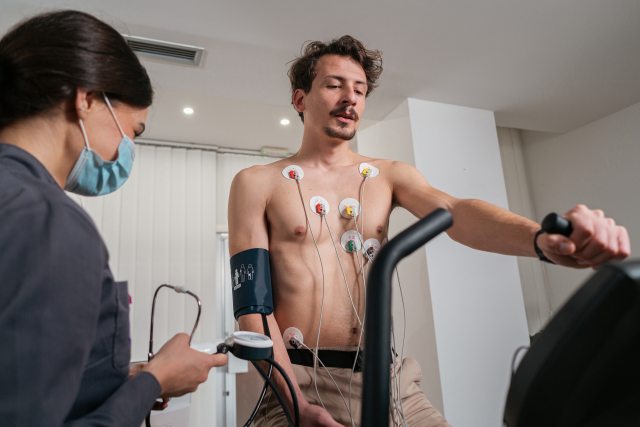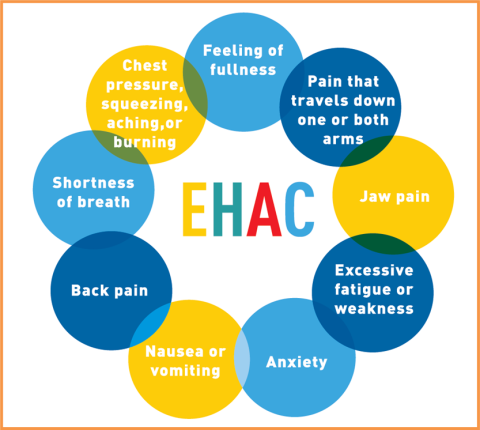How can your doctor tell if you've had a heart attack?

The sooner you seek care after feeling symptoms, the sooner you solve the mystery.
Just as investigators in a TV crime drama dust for fingerprints or take samples for DNA testing, healthcare professionals use techniques to collect clues when they suspect someone has had a heart attack — even if it’s hours or days later.
Pranoti Hiremath, MD, a PeaceHealth cardiologist in Springfield, Oregon, outlines a few of the ways she and other heart care experts can help you learn what’s going on inside your heart.
Clues can be easy to miss
The first warning of heart trouble is often chest pain. But even that can be tricky.
Dr. Hiremath saw a woman in the emergency room who had abrupt onset of extreme fatigue (tiredness) and trouble breathing. The patient was very surprised to learn that three of her main arteries (large blood vessels to her heart) were blocked.
As this situation showed, “not everyone has the classic symptoms of a heart attack,” says Dr. Hiremath.
“You can have an attack without symptoms of chest pain.” This is especially true for patients with diabetes as well as women, whose symptoms can show up in ways different from men.
The story from the ER isn’t unusual — maybe because heart disease is so common (and so deadly) in both women and men. Fortunately, Dr. Hiremath and the team were able to save this patient because she came in when she did.
It’s a clear case to show the value of seeking care when something doesn’t feel right.
What happens in a heart attack
A heart attack happens when the heart muscle doesn’t get enough blood and oxygen. Often, that’s because blood vessels leading into the heart are blocked.
Acting fast could save a life and make it much easier to get back to good health. If you have one or more of the following heart attack symptoms, call 911 (or ask someone else to call):
- Chest pain, pressure or tightness
- Difficulty breathing
- Sudden fatigue (tiredness)
- Sudden sweatiness, nausea or vomiting
- Malaise (general uneasiness or unexplained discomfort)
- Pressure or pain in the jaw, shoulder or back
Be alert and know these symptoms. It can help you and others around you — whether you’re at home, in the store, on a bus or wherever you are. The more of us who know what to do, the quicker we can get help.

Symptoms after an attack
A heart attack damages the heart’s ability to do what it’s supposed to do — pump blood. People who have had a heart attack often notice swelling in their legs and shortness of breath when they walk or move.
Swelling and shortness of breath are big clues that your heart is having trouble pushing blood through the body. If that’s happening, fluid can build up in your lungs and lower limbs. That’s why you feel short of breath. And you usually feel worse when you’re either lying flat or when you’re physically active.
If the swelling in your legs gets worse enough to cause your breathing to get harder, even when you’re not moving much, call 911 and/or go to the emergency room. If your leg swelling gradually gets worse, call your clinic to be seen as soon as you’re able.
One thing to keep in mind is that just because a symptom goes away, it doesn’t mean your heart is okay. Follow up with a provider who can check things out and make sure everything is working well.
Identifying a heart attack after it’s over
There’s not just one way to tell with 100% certainty if someone has had a heart attack, Dr. Hiremath says. That’s why doctors use a few different tests to check someone’s heart. These tests are usually painless or minimally invasive. Here are the most common:
- ECG or EKG measures the electrical signals that control your heart rhythm.
- Echocardiogram shows an ultrasound image of your heart and blood flow through your heart valves. There are a few different kinds of echos that let your doctor see what’s going on inside the heart.
- Stress test measures what happens in the heart when you exercise (or take a medicine) that makes your heart beat faster.
- Coronary angiogram is the “gold-standard” tool to get a closeup view of the heart and arteries. It is a minimally invasive procedure in which spaghetti-size tubes called catheters are threaded into the blood vessel of the wrist or leg and then up to the heart to gather x-ray images of the coronary arteries.
- Blood tests can also be used within one or two days of a suspected heart attack. The heart releases certain proteins or enzymes into the blood if there’s damage. After a few days, these markers can return to normal.
Taken together, the results from these tests can help your doctor piece together what happened. More importantly, they help you plan what you can do next.
Here’s the most important thing to remember, according to Dr. Hiremath:
Don’t wait.
The sooner a heart attack can be diagnosed, the sooner you can get the treatment you need, she says.
Pranoti G. Hiremath MD
Pranoti Hiremath, MD has joined the Cardiology team at Oregon Heart & Vascular Institute at PeaceHealth Sacred Heart Medical Center at RiverBend. She earned her Medical Degree at Harvard University School of Medicine. She completed an Internal Medicine Residency at the University of Washington, in Seattle WA. She completed a Cardiovascular Fellowship, and additional Clinical Investigation training, Interventional Cardiology and Structural Heart Fellowships at Johns Hopkins Hospital in Baltimore, MD. Dr. Hiremath is a Structural and Interventional Cardiologist on the Oregon Cardiology team. Her hobbies include healthy cooking, hiking, traveling, movies, and sharing time with family and friends. Dr. Hiremath’s practice philosophy is based upon a foundation of respect, communication, and compassion. She endeavors to practice exemplary medicine that fulfills the unique goals of each of her patients and guides individualized care. Dr. Hiremath aims to build collaborative partnerships with patients and the community.






